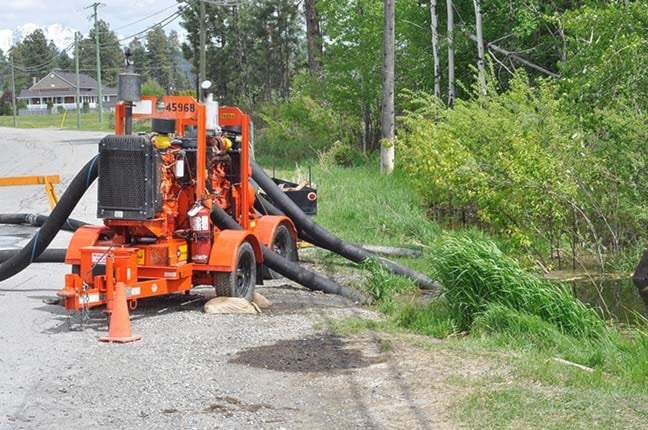Elizabeth Lake continues to sit at its swollen level, covering fields, trails and animal habitats – and with the looming spring freshet, that problem could get worse before getting better.
Stakeholders, including the City of Cranbrook, have found that an engineering assessment of the Elizabeth Lake drainage basin is needed.
Mayor Wayne Stetski said the study will look at Jimsmith Creek and other streams in the watershed to assess how the water moves through Elizabeth Lake and into Cranbrook's stormwater system.
"We are working with all of the impacted agencies to realize a better future," said Stetski, "which will include the comprehensive engineering study, creating more spring storage capacity in the lake, stream channel clearing, and replacing some older culverts with new ones that have water control structures built into them."
A stakeholders meeting was held on May 14, primarily to discuss the flooding and look at strategies for dealing with it in the short and long term. It included representatives from the City of Cranbrook, the Regional District of East Kootenay, Ministry of Forests, Lands and Natural Resource Operations Stewardship Branch, Ministry of Transportation and Infrastructure (MOTI), and Ducks Unlimited.
In the meantime, the city continues to pump water over Wattsville Road as a method to control flow downstream and keep the land further into the city from flooding.
"We have three pumps down there at Wattsville Road," CAO Wayne Staudt told council on May 12. "We pump out of the lake side of Wattsville Road and then put it into the channel, that then travels all the way down and ends up in Joseph Creek. So anything coming off Elizabeth Lake proceeds down and drops into Joseph Creek."
Staudt said the city has only been pumping during the day to keep the noise down for guests at Elizabeth Lake Lodge.
Staudt also noted that he'd met with MOTI the week before to assess the condition of its culvert which runs underneath the highway.
"There was a question of whether or not the city should open up the two culverts at Wattsville Road and deal with it that way as opposed to the pumping," Staudt said.
However, MOTI told the city that the culvert under the highway was working at maximum capacity and could not handle another drop of water. "So if we were to move more water at Wattsville, we would probably flood out the Wattsville area, unless we attach pumps across the highway, and pumping across the highway is much more of a burden to the community."
Staudt said the pumps are working well, but the bigger issue is what's going to happen as the melt comes.
"We're at about 135 per cent snowpack and it's already the middle of May, so that's a very high snowpack for the middle of May," he said. "So we're very concerned about flooding in and around Joseph Creek very shortly."
Staudt also said that he'd spoken with a resident who'd lived in the Elizabeth Lake area for 38 years and this is the highest he'd ever seen it.
"Right from the beginning we were very clear that we're not willing to flood out Cranbrook residents to lower Elizabeth Lake any more than the system holds," Stetski said at council meeting.
Work will be required on downstream culverts; however, that work cannot take place until water levels have receded.
The RDEK has organized a neighbourhood meeting at 7 p.m. on May 26 at the RDEK office.
"These meetings give us the opportunity to share information directly with the impacted residents and to hear their concerns and questions," Rob Gay, RDEK board chair, said.
